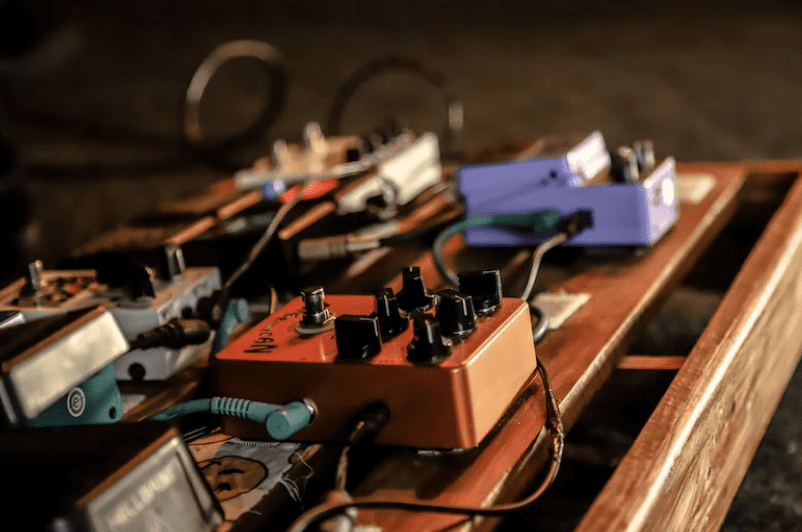
Finding it hard to get the perfect sound from your guitar? Maybe your guitar gets lost in the mix? Do you have major feedback issues with your acoustic? The problem’s not your guitar—you need an equalizer! The Test EQ700 provides total control over your tone and puts the brakes on annoying feedback, no matter what the performance situation. You can instantly improve the sound of your guitar with a little help from the Test EQ700.
Master of Tone
With 15 dB of available boost or cut per band (that’s a lot!), the EQ700’s seven frequency bands have been carefully optimized
to provide the ultimate tools for EQing the guitar. Of course, to make full use of the EQ700’s capabilities, it helps to first understand some basics about the frequency
range of your axe.
The EQ700 covers the audio spectrum from below 100 Hz to over 6.4 kHz, allowing you to effectively cut or boost specific frequencies to help focus your sound. Special attention has been paid to the critical midrange frequencies, which can make or break your tone. The following section offers tips that will have you sculpting the perfect guitar sound in no time at all.
Understanding EQ
Most performers don’t have a clue about what good equalization can do for their sound. Maybe you’ve heard the old maxim,
“Make a sine-wave to get really good sound,” or “Make a smiley-face, that always works.” Sadly, this qualifies as advice from the uninformed. Just as every room is
unique, so is every musical instrument. Even guitars made by the same manufacturer, using the same materials, on the same day can vary a great deal.
People provide a good example of this principal—although we are all similar, we don’t all wear the same size shoes, or even have the same color eyes. There is no one “perfect” equalization curve that fits every scenario; equalization is dynamic.
Applying EQ to the Guitar
Most acoustic and electric guitar energy lies between 100 Hz and 6.4 kHz. Even slight changes in this range can cause
a tremendous variation in overall energy and impact, as the human ear is especially sensitive to this range.
Boosting frequencies around 200 Hz - 400 Hz often provides warmth and body, while boosting frequencies in the 3.2 kHz - 6.4 kHz range adds clarity to clean guitar signals. Depending on the amount of distortion, this same range can ruin the sound of an overdriven electric guitar by adding harsh harmonics.
One of the most common mistakes is adding too much bass to acoustic guitars. If the low frequencies are boosted excessively, acoustics can easily get lost in the overall mix. Most acoustic guitars are also prone to feedback in the 200 Hz - 400 Hz range.
A general rule of thumb—the best results are often achieved by finding and reducing the frequency bands that are offending, and then turning up the overall volume, rather than boosting one specific band.
What our teachers say
The Test pedals at this price range offer really great value and are a great way to get started with guitar effects and experiement with some cool new sounds. Alex Cumberland - Guitar teacher